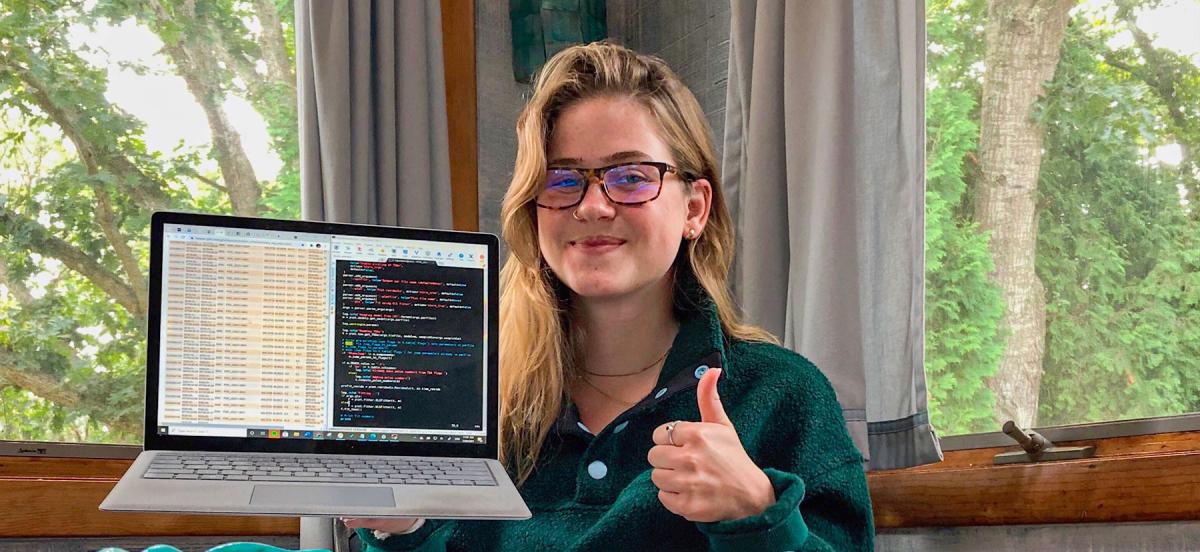Summer Centered: Hedy Goodman ’23 Studies the Stars for NASA

Details
The astronomy and physics double major is analyzing pulsar data with Professor Andrea Lommen this summer.
Last summer, Hedy Goodman ’23 did not know her interest in astronomy extended beyond stargazing at her local observatory. This summer, she joined researchers to study neutron stars using NICER X-ray telescope data as a part of Professor of Physics and Astronomy Andrea Lommen’s research group. Lommen is a member of NASA's Neutron Star Interior Composition Explorer, or NICER, team. NICER is a high-precision X-ray telescope aboard the International Space Station that is being used to learn about neutron stars.
Goodman, a physics and astronomy double major and German Studies minor, joins Danika Rasmussen ’23 and Sasha Levina ’23 as Koshland Integrated Natural Science Center-sponsored interns in Lommen’s research group this summer.
“My research partner Danika Rasmussen and I have taken on the tricky role of unpacking and analyzing a pretty dense set of pulsar data, which will continue to grow for the length of the mission,” said Goodman. “Our contribution surpasses that of a machine because we need to view the data graphically (i.e. fit to a plot) and use our own judgment in order to confirm any stellar activity. We're essentially an important pair of eyes for the team and their lesser-studied pulsars.”
Because Lommen’s research is a part of the NICER team’s larger work, Goodman and other students have the opportunity to collaborate with astronomers and researchers across the country.
“I’ll find myself reaching out to other researchers in the field,” said Goodman, “and just think how rare it must be to share an interest in the same, tiny source--literally, pulsars are less than 20 miles across, though their mass can amount to five times that of our Sun! ”
Goodman is already thinking about ways to bring her research this summer into her senior thesis two years from now.
“Right now, I'm trying my hand at coding a significance test for periodicity in my pulsar's signal,” she said. “It’s been around since 1983 and is still pretty widely used in literature among astronomers, so I'd love to consider proposing an updated and more accurate statistical parameter to better model these younger pulsars with which I'm working."
“Summer Centered” is a series exploring our students’ campus-supported summer work.




